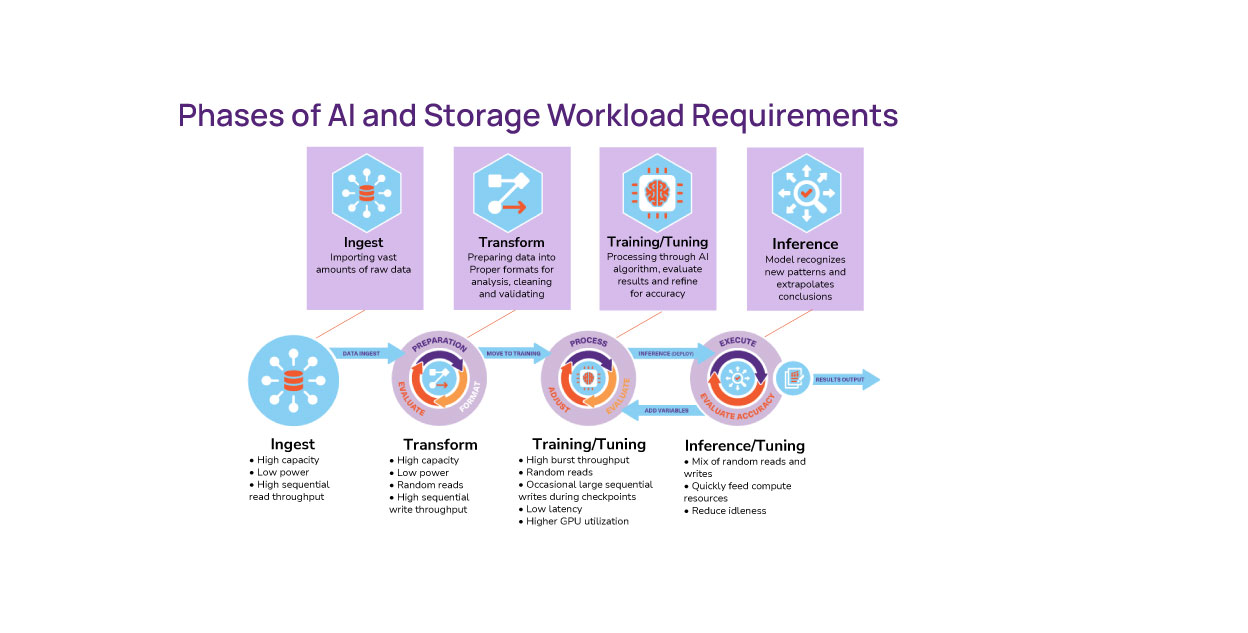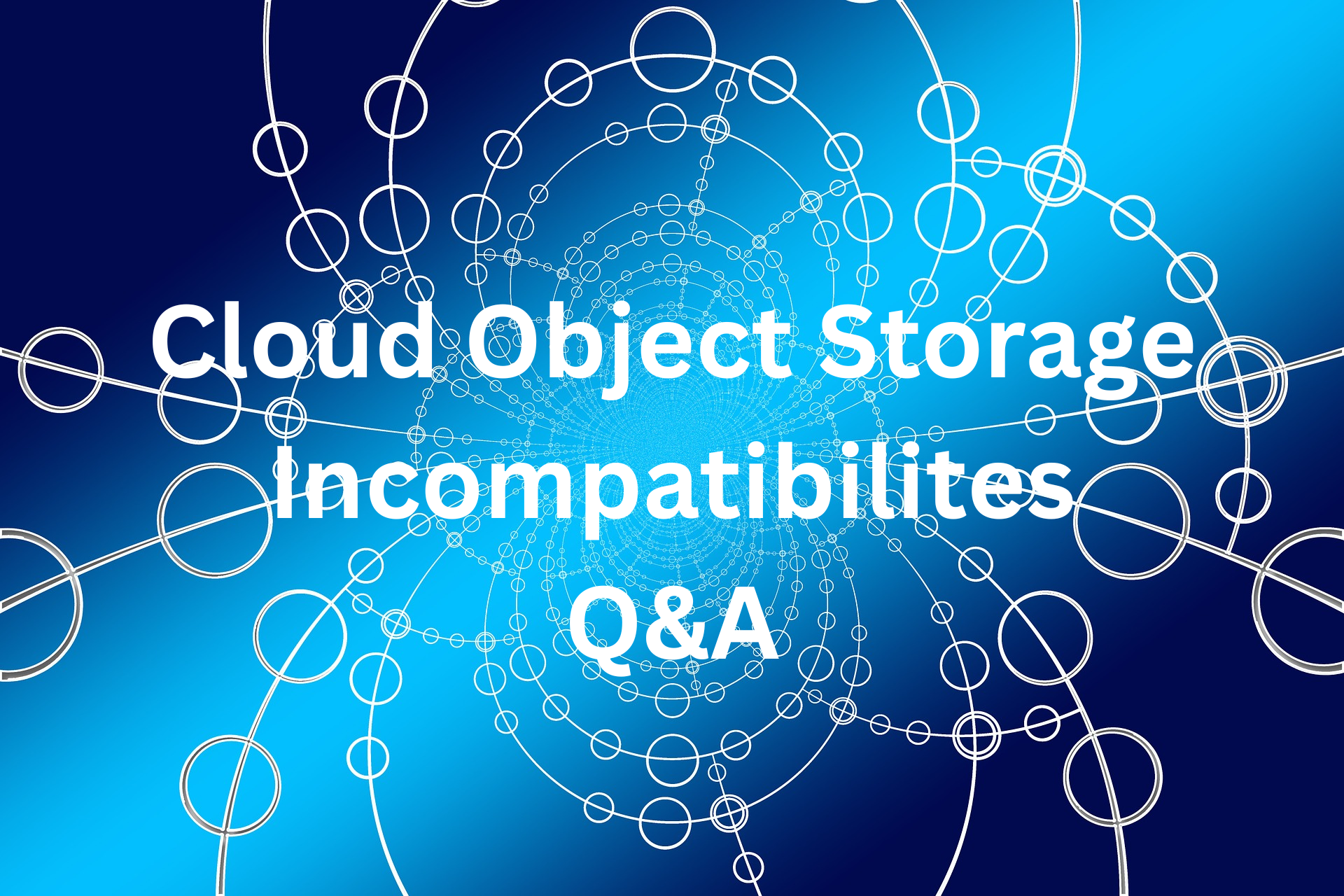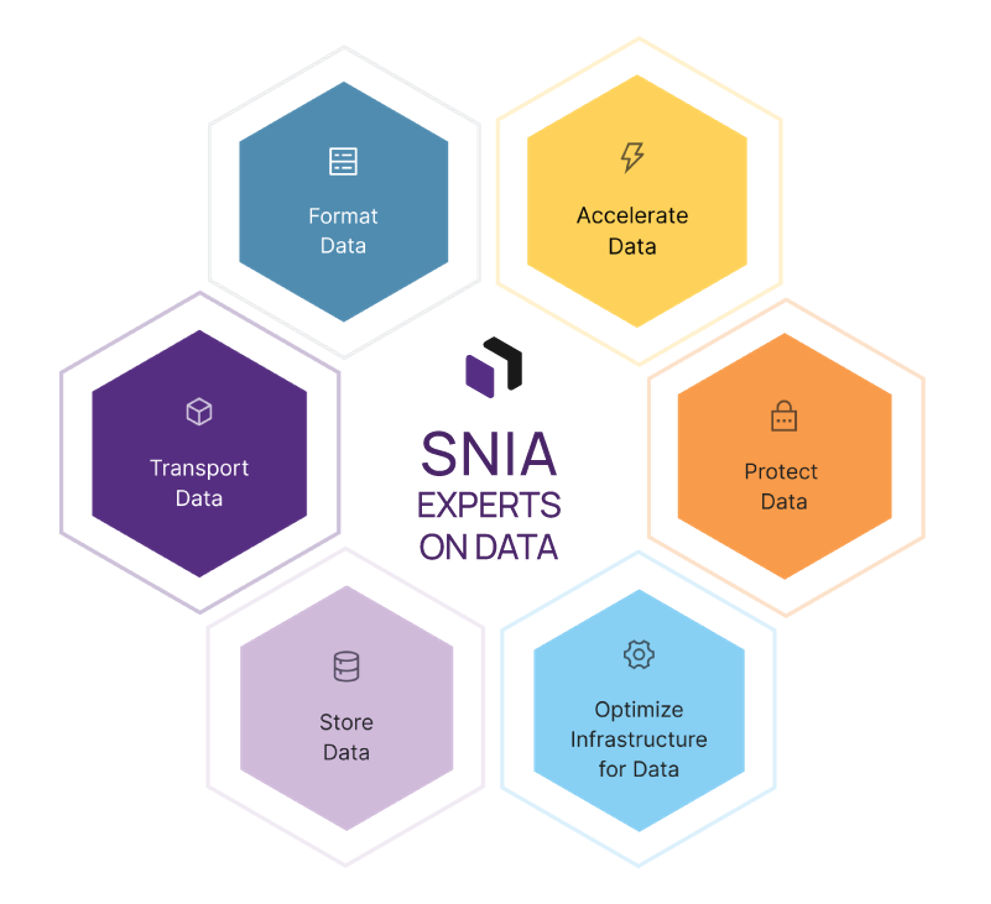 Data in transit provides a large attack surface for bad actors. Keeping data secure from threats and compromise while it’s being transmitted was the topic at our live SNIA Networking Storage Forum (NSF) webcast, Securing Data in Transit. Our presenters, Claudio DeSanti, Ariel Kit, Cesar Obediente, and Brandon Hoff did an excellent job explaining how to mitigate risks.
We had several
questions during the live event. Our panel of speakers have been kind enough to
answer them here.
Q. Could we control the most
important point – identity, that is, the permission of every data transportation
must have an identity label, so that we can control anomalies and misbehaviors
easily?
A. That is the purpose of
every authentication protocol: verify the identity of entities participating in
the authentication protocol on the basis of some secret values or certificates
associated with the involved entity. This is similar to verifying the identity
of a person on the basis of an identity document associated with the person.
Q. What is BGP?
A. BGP stands for Border Gateway Protocol, it is a popular routing protocol commonly used across the Internet but also leveraged by many customers in their environments. BGP is used to exchange routing information and next hop reachability between network devices (routers, switches, firewall, etc.). In order to establish this communication among the neighbors, BGP creates a TCP session in port 179 to maintain and exchange BGP updates.
Q. What are ‘north-south’ and
‘east west’ channels?
A. Traditionally
“north-south” is traffic up and down the application or solution
“stack” such as from client to/from server, Internet to/from
applications, application to/from database, application to/from storage, etc.
East-West is between similar nodes–often peers in a distributed application or
distributed storage cluster. For example, east-west could include traffic from
client to client, between distributed database server nodes, between clustered
storage nodes, between hyperconverged infrastructure nodes, etc.
Q. If I use encryption for
data in transit, do I still need a separate encryption solution for data at
rest?
A. The encryption of data in
transit protects the data as it flows through the network and blocks attack
types such as eavesdropping, however, once it arrives to the target the data is
decrypted and saved to the storage unencrypted unless data at rest encryption
is applied. It is highly recommended to use both for best protection, data at rest
protection protects the data in case the storage target is accessed by an
attacker. The SNIA NSF did a deep dive on this topic in a separate webcast “Storage
Networking Security Series: Protecting Data at Rest.”
Q. Will NVMe-oFÔ use 3 different
encryption solutions depending upon whether it’s running over Fibre Channel,
RDMA, or IP?
A. When referring to data in transit,
the encryption type depends on the network type, hence, for different networks
we will use different data-in-motion encryption protocols, nevertheless, they
can all be based on Encapsulating Security Protocol (ESP) with same cipher
suite and key exchange methods.
Q. Can NVMe-oF over IP
already use Transport Layer Security (TLS) for encryption or is this
still a work in progress? Is the NVMe-oF spec aware of TLS?
A. NVMe-oF over TCP already
supports TLS 1.2. The NVM Express
Technical Proposal TP 8011 is adding support for TLS 1.3.
Q. Are there cases where I would want to use both MACsec and IPSec, or use both IPSec and TLS? Does CloudSec rely on either MACSec or IPSec?
A. Because of the number of cyber-attacks
that are currently happening on a daily basis, it is always critical to create
a secure environment in order to protect confidentially and integrity of the
data. MACsec is enabled in a point-to-point Ethernet link and IPSec could be
classified as to be end-to-end (application-to-application or
router-to-router). Essentially you could (and should) leverage both
technologies to provide the best encryption possible to the application.
These
technologies can co-exist with each other without any problem. The same can be
said if the application is leveraging TLS. To add an extra layer of security you
can implement IPSec, for example site-to-site to IPSec VPN. This is true especially
if the communication is leveraging the Internet.
CloudSec,
on the other hand, doesn’t rely on MACsec because MACsec is a point-to-point
Ethernet Link technology and CloudSec provides the transport and encryption
mechanism to support a multi-site encryption communication. This is useful
where more than one data center is required to provide an encryption mechanism
to protect the confidentially and integrity of the data. The CloudSec session
is a point-to-point encryption over Data Center Interconnect on two or more
sites. CloudSec key exchange uses BGP to guarantee the correct information gets
the delivered to the participating devices.
Q. Does FC-SP-2 require
support from both HBAs and switches, or only from the HBAs?
A. For data that moves outside the data center, Fibre Channel Security Protocols (FC-SP-2) for Fibre Channel or IPsec for IP would need to be supported by the switches or routers. No support would be required in the HBA. This is most common use case for FC-SP-2. Theoretically, if you wanted to support FC-SP-2 inside the secure walls of the data center, you can deploy end-to-end or HBA-to-HBA encryption and you won’t need support in the switches. Unfortunately, this breaks some switch features since information the switch relies on would be hidden. You could also do link encryption from the HBA-to-the switch, and this would require HBA and switch support. Unfortunately, there are no commercially available HBAs with FC-SP-2 support today, and if they become available, interoperability will need to be proven. This webcast from the Fibre Channel Industry Association (FCIA) goes into more detail on Fibre Channel security.
Q. Does FC-SP-2 key
management require a centralized key management server or is that optional?
A. For switch-to-switch
encryption, keys can be managed through a centralized server or manually. Other
solutions are available and in production today. For HBAs, in most environments
there would be thousands of keys to manage so a centralized key management
solution would be required and FC-SP provides 5 different options. Today, there
are no supported key management solutions for FC-SP-2 from SUSE, RedHat,
VMware, Windows, etc. and there are no commercially available HBAs that support
FC-SP-2.
This webcast was
part of our Storage Networking Security Webcast
Series and they are all
available on demand. I encourage you to take a look at the other SNIA
educational webcasts from this series:
Data in transit provides a large attack surface for bad actors. Keeping data secure from threats and compromise while it’s being transmitted was the topic at our live SNIA Networking Storage Forum (NSF) webcast, Securing Data in Transit. Our presenters, Claudio DeSanti, Ariel Kit, Cesar Obediente, and Brandon Hoff did an excellent job explaining how to mitigate risks.
We had several
questions during the live event. Our panel of speakers have been kind enough to
answer them here.
Q. Could we control the most
important point – identity, that is, the permission of every data transportation
must have an identity label, so that we can control anomalies and misbehaviors
easily?
A. That is the purpose of
every authentication protocol: verify the identity of entities participating in
the authentication protocol on the basis of some secret values or certificates
associated with the involved entity. This is similar to verifying the identity
of a person on the basis of an identity document associated with the person.
Q. What is BGP?
A. BGP stands for Border Gateway Protocol, it is a popular routing protocol commonly used across the Internet but also leveraged by many customers in their environments. BGP is used to exchange routing information and next hop reachability between network devices (routers, switches, firewall, etc.). In order to establish this communication among the neighbors, BGP creates a TCP session in port 179 to maintain and exchange BGP updates.
Q. What are ‘north-south’ and
‘east west’ channels?
A. Traditionally
“north-south” is traffic up and down the application or solution
“stack” such as from client to/from server, Internet to/from
applications, application to/from database, application to/from storage, etc.
East-West is between similar nodes–often peers in a distributed application or
distributed storage cluster. For example, east-west could include traffic from
client to client, between distributed database server nodes, between clustered
storage nodes, between hyperconverged infrastructure nodes, etc.
Q. If I use encryption for
data in transit, do I still need a separate encryption solution for data at
rest?
A. The encryption of data in
transit protects the data as it flows through the network and blocks attack
types such as eavesdropping, however, once it arrives to the target the data is
decrypted and saved to the storage unencrypted unless data at rest encryption
is applied. It is highly recommended to use both for best protection, data at rest
protection protects the data in case the storage target is accessed by an
attacker. The SNIA NSF did a deep dive on this topic in a separate webcast “Storage
Networking Security Series: Protecting Data at Rest.”
Q. Will NVMe-oFÔ use 3 different
encryption solutions depending upon whether it’s running over Fibre Channel,
RDMA, or IP?
A. When referring to data in transit,
the encryption type depends on the network type, hence, for different networks
we will use different data-in-motion encryption protocols, nevertheless, they
can all be based on Encapsulating Security Protocol (ESP) with same cipher
suite and key exchange methods.
Q. Can NVMe-oF over IP
already use Transport Layer Security (TLS) for encryption or is this
still a work in progress? Is the NVMe-oF spec aware of TLS?
A. NVMe-oF over TCP already
supports TLS 1.2. The NVM Express
Technical Proposal TP 8011 is adding support for TLS 1.3.
Q. Are there cases where I would want to use both MACsec and IPSec, or use both IPSec and TLS? Does CloudSec rely on either MACSec or IPSec?
A. Because of the number of cyber-attacks
that are currently happening on a daily basis, it is always critical to create
a secure environment in order to protect confidentially and integrity of the
data. MACsec is enabled in a point-to-point Ethernet link and IPSec could be
classified as to be end-to-end (application-to-application or
router-to-router). Essentially you could (and should) leverage both
technologies to provide the best encryption possible to the application.
These
technologies can co-exist with each other without any problem. The same can be
said if the application is leveraging TLS. To add an extra layer of security you
can implement IPSec, for example site-to-site to IPSec VPN. This is true especially
if the communication is leveraging the Internet.
CloudSec,
on the other hand, doesn’t rely on MACsec because MACsec is a point-to-point
Ethernet Link technology and CloudSec provides the transport and encryption
mechanism to support a multi-site encryption communication. This is useful
where more than one data center is required to provide an encryption mechanism
to protect the confidentially and integrity of the data. The CloudSec session
is a point-to-point encryption over Data Center Interconnect on two or more
sites. CloudSec key exchange uses BGP to guarantee the correct information gets
the delivered to the participating devices.
Q. Does FC-SP-2 require
support from both HBAs and switches, or only from the HBAs?
A. For data that moves outside the data center, Fibre Channel Security Protocols (FC-SP-2) for Fibre Channel or IPsec for IP would need to be supported by the switches or routers. No support would be required in the HBA. This is most common use case for FC-SP-2. Theoretically, if you wanted to support FC-SP-2 inside the secure walls of the data center, you can deploy end-to-end or HBA-to-HBA encryption and you won’t need support in the switches. Unfortunately, this breaks some switch features since information the switch relies on would be hidden. You could also do link encryption from the HBA-to-the switch, and this would require HBA and switch support. Unfortunately, there are no commercially available HBAs with FC-SP-2 support today, and if they become available, interoperability will need to be proven. This webcast from the Fibre Channel Industry Association (FCIA) goes into more detail on Fibre Channel security.
Q. Does FC-SP-2 key
management require a centralized key management server or is that optional?
A. For switch-to-switch
encryption, keys can be managed through a centralized server or manually. Other
solutions are available and in production today. For HBAs, in most environments
there would be thousands of keys to manage so a centralized key management
solution would be required and FC-SP provides 5 different options. Today, there
are no supported key management solutions for FC-SP-2 from SUSE, RedHat,
VMware, Windows, etc. and there are no commercially available HBAs that support
FC-SP-2.
This webcast was
part of our Storage Networking Security Webcast
Series and they are all
available on demand. I encourage you to take a look at the other SNIA
educational webcasts from this series:
- Understanding Storage Security and Threats
- Protecting Data at Rest
- Encryption 101
- Key Management 101
- Security & Privacy Regulations
- Applied Cryptography















Leave a Reply